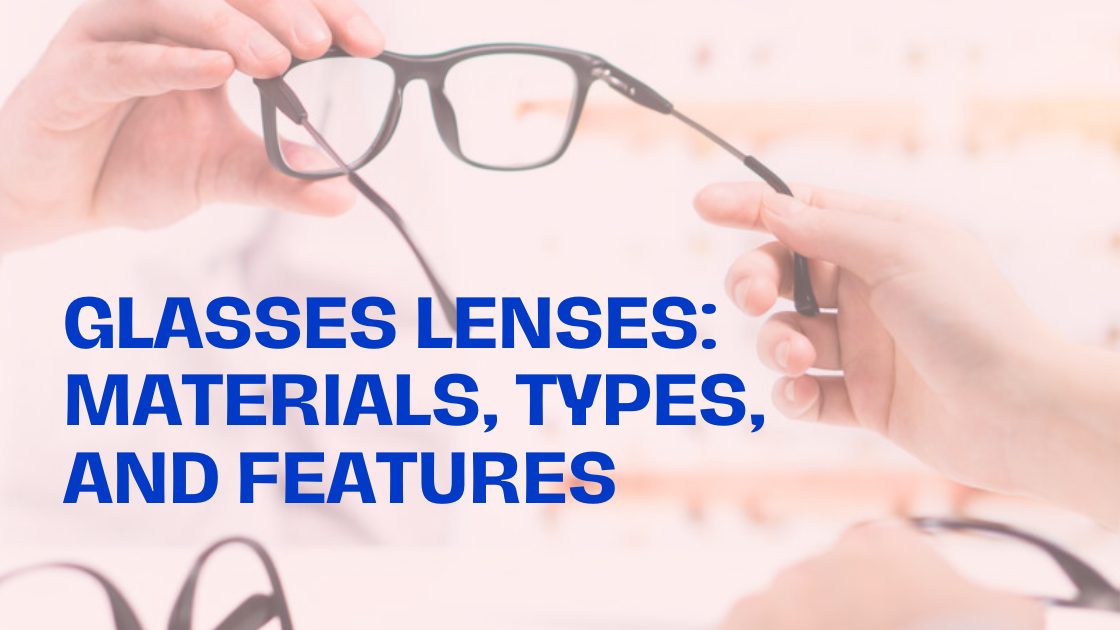Selecting lenses is a common dilemma that everyone faces when they get new pairs of glasses. With a wide array of types, materials, and features to choose from, it’s really tricky to get the perfect pair.
You know which type of lens you would need to correct your vision. For instance, when you have both short-sightedness and long-sightedness, you can choose bifocal glasses to correct your vision. But then, as well, you have the option of choosing progressive lenses. And what about the material and coating type? All these are factors that you need to consider before buying lenses for your pair.
Types of Lens Materials
Lenses come in an array of materials, and you have to choose the right material to fit your requirements. Each has its own set of benefits. So, choose wisely.
Glass
Glass lenses make for some of the best lenses. However, they are quite heavy and are easy to break. When vision correction was in its early years, all glasses were made from glasses. However, with time, more effective and substantial materials are gradually replacing glasses.
Plastic
Lighter and harder to break than plastic, plastic lenses also provide excellent vision correction. Created in the 1940s, plastic lenses are half plastic’s weight and more durable than glass. So, plastic too can be your choice for lens material.
Polycarbonate
Polycarbonate was first introduced in the 1970s and has become increasingly popular over the years. Lenses made from plastic are even lighter than plastic and have a higher impact resistance. Thus, they are the ideal choice for children’s glasses and safety glasses that have a high chance of wear and tear. You can also get them with UV protection.
Trivex
Introduced in 2001, Trivex lenses are designed from a material similar to polycarbonate. However, compared to polycarbonate, they are thinner and more impact-resistant. For some people, Trivex lenses can have more beneficial vision qualities.
High-Index Plastic
High-index plastic lenses are suitable for people with strong prescriptions. They have a higher index of refraction and have the option of an aspheric lens. They are also slimmer and more lightweight than plastic lenses. So, you can choose high-end plastic for a more appealing look.
Types of Prescription Lens
According to the prescription, there can be a number of lens types. The different types of lenses for vision correction are detailed below for a clearer understanding.
Single Vision
These are the most common and have the largest field of vision. People who are nearsighted or farsighted are typically prescribed single-vision lenses. These are the cheapest among all the different types because they correct your vision only at a particular distance.
Bifocals
A type of “multifocal lens,” bifocals are created with two different “powers” to assist people with both nearsightedness and farsightedness. Made with two different sections, bifocal glasses are a good solution for people with multiple vision problems.
Trifocals
These lenses are also a type of “multifocal” lens. They differ from bifocals in the fact that they have an additional layer in the middle to correct intermediate vision. This layer helps people having problems viewing things within arm’s reach, like computer screens.
Progressives
These are a fantastic alternative to bifocals or trifocals for people having trouble adjusting to them. They offer the same benefits as bifocals or trifocals but do not have lines in between, making it easier to adjust to the vision.
Prism
Prism lenses are another type of corrective lens that find their usefulness in correcting severe binocular issues such as eyes not looking in the same direction when at rest. People with double vision can also use these. However, remember that prism lenses do not correct refractive issues. They trick people into believing that a particular object is at a different location to promote eye alignment.
You can always connect with Salisbury Optometrist in Australia for affordable eyeglasses and complete eye health checkups.
Lens Coating Types and Treatments
Different coating types and treatments are used to give unique features to glasses.
Scratch-resistant coating: They are often applied to lenses to increase durability and resistance to scratches.
Anti-fog coating: Switching from a cold to a hot atmosphere can produce fog on your glasses. Having an anti-fog coating applied to your glasses can reduce this effect.
UV Blocking treatment: UV rays are harmful, and having a UV treatment done to your lenses can reduce or block harmful UV rays from reaching your eyes.
Tinted: A dark or light tint can enhance vision quality.
Blue light blocking: With blue light blocking treatment applied to your lenses, your eyes will be protected from harmful light from computer screens.
You need to know about these types of lenses when making your lens. If the costs of making a new lens according to your preferences are becoming too heavy to bear, you can get help from your health fund extras to make your glasses.

